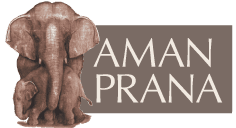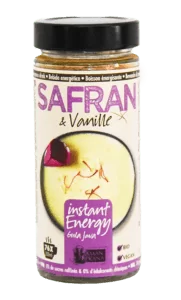Medical uses of saffron throughout history
Saffron has long been used in various cultures as a medicinal plant. The Mesopotamia and Greeks used saffron as a stomach remedy. The following prescription was prescribed for the medical use of saffron in gastric bleeding: ox fat, saffron, coriander, myrtle and agarwood. (Secrets of Saffron, the vagabond life of the world’s most seductive spice, Pat Willard, p34-35)
Homer already spoke of saffron in the Iliad, under the name Krocoz, pointing to the use of saffron as a medicine and perfume. And as some authors confirm, during the Bacchanals (Roman drinking parties) saffron was sprinkled on the floor, because its aroma helped to incite the guests.
Problems with teeth and eyes were solved in Egypt with saffron: e.g. saffron powder dissolved in water in the eyes against cataracts. To strengthen the teeth, the whole Ccrocus stativa was eaten. (Secrets of Saffron, the vagabond life of the world’s most seductive spice, Pat Willard, p36)
Dioscorides once said: “Saffron stimulates the lust and in the form of a poultice it relieves the inflammations that have something of the fire of Saint Anthony” (He refers here to the Herpes zoster, also called shingles or zona).
The Persians used saffron as an aphrodisiac, mixing it into food to relieve the mind and to dispel melancholy or melancholy (Secrets of Saffron, the vagabond life of the world’s most seductive spice, Pat Willard, p41). The Persians believed that saffron could make depression, melancholy and melancholy disappear. Saffron also has narcotic properties, they say. (Secrets of Saffron, the vagabond life of the world’s most seductive spice, Pat Willard, p105). The Persians also used saffron for severe diarrhea (dysentery) and measles.
Alexander the Great used almost a cup of saffron a day. He took a saffron bath when he was injured, had aching joints, and to heal wounds. (Secrets of Saffron, the vagabond life of the world’s most seductive spice, Pat Willard, p54 & 59).
Cleopatra took milk baths with saffron. “Saffron enhances pleasure”, according to Cleopatra, “and relaxes the loin for more sensitivity”. Cleopatra used almost a full cup of saffron dissolved in hot water. She bathed in this hot saffron bath as long as the bath remained warm. For Cleopatra it was clear: saffron increases pleasure during sex. (Secrets of Saffron, the vagabond life of the world’s most seductive spice, Pat Willard, p55).
Medical use of saffron in the black death and jaundice
In the Middle Ages, saffron was used against “the black death”. Many doctors sought refuge in Arabic textbooks. They had their houses purified by sprinkling saffron on the ground or evaporating saffron in oil or water. Countess Elizabeth of Kent was a firm believer in it. (Secrets of Saffron, the vagabond life of the world’s most seductive spice, Pat Willard, p97). Because of its yellowish color, saffron was also used in Europe as a medicine for jaundice by the followers of the old ‘Doctrine of Signatures’. In the East, saffron was commonly used to counteract mild or moderate depression; saffron was known to bring joy and knowledge.
In England, saffron was seen as a medicine in the Middle Ages. England had many plagues at that time. Saffron relieved the pain and made measles, smallpox, syphilis and gout disappear. (Secrets of Saffron, the vagabond life of the world’s most seductive spice, Pat Willard, p121). The consumption became more bearable after drinking saffron soup. A recipe of white wine and lots of saffron was a perfect remedy for spasms and cramps. Saffron was also known in England to strengthen the heart, relieve the brain and combat mental anxieties. Saffron was often used in the Middle Ages in England like Prozac today: to reduce depression and the feeling of dejection. “Once the active ingredients of saffron have reached the heart, saffron causes laughter and joy.” The prescription of saffron as a treatment for depression was mentioned in all medical literature and was widely known among the population. (Secrets of Saffron, the vagabond life of the world’s most seductive spice, Pat Willard, p121-124)
Saffron is also highly valued in the East, especially in folk medicine in India and Tibet. There saffron was part of energizing pills along with nutmeg, cardamom, cloves, cinnamon, ginger, black pepper and musk; a compound that, given its ingredients, can be considered an aphrodisiac. Until today, these pills are valued by the Tibetan Buddhists as one of the best gifts. In Tibet, saffron is often also an ingredient in medicinal incense. Saffron is also considered a tonic for the heart and nervous system. In India, Tibet and China, saffron was also used as a yellow/orange dye for the clothes of Hindu and Buddhist monks. Crocin in saffron is water soluble and gives saffron its unique color. The yellow color of the cheaper turmeric (curcuma) is similar, but not the same.
In traditional Chinese medicine, saffron is used for its anti-inflammatory properties. Saffron is also used as a stomach tonic and as a sedative, for cramps, asthma and to treat bruises.
In Morocco we find saffron to soothe the pain during the first teething of children (external use: analgesic effect on the mucous membrane of the gums). The children’s gums are rubbed with honey and saffron, a natural antiseptic, using a gold ring.
French grandmothers also used saffron tea or milk with saffron to combat the menstrual pain in young girls. Also in gynecology saffron has been and is recommended for painful or irregular periods and to stimulate the uterus. Saffron has been used in France for a long time to remedy all kinds of pains. They still use the well-known syrup DELABARRE to prevent or relieve the pain of the first teeth.
Today, saffron is still often used by pharmacists, especially to make preparations for the eyes (eye drops and eyewash).
Due to the bitter base of saffron, the spice is suitable to promote the functioning of the stomach, while the crocetin has a cholesterol-lowering effect. Saffron can also be used in contagious diseases, because saffron cleanses and unclogs the liver. Saffron is a true gift from Mother Nature. Saffron is more than worthy of the name superfood.

